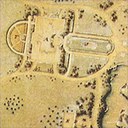0219 Private Gardens of the Tyszkiewiczs, Bnińskis, and the Potulickis Designed by Édouard André in Poland and Lithuania
Identifiers (Article)
Identifiers (Files)
Abstract
One of the most outstanding designers of 19th-century European gardens was Édouard André, famous both as a theoretician, author of numerous publications, and first of all as a practitioner: designer of several hundred of private and public park layouts for clients from around the world. These also included Polish aristocrats: the Bnińskis, Potulickis and the Tyszkiewiczs, for whom he designed park complexes preserved until today in Poland: Samostrzel and Potulice, as well as in Lithuania: in Landwarów (Lentvaris), Zatrocze (Užutrakis), Waka (Trakų Vokė), and Połąga (Palanga). The recreation of the history of laying out these parks and their analysis allow to enrich our knowledge of André’s creative methods and of the organization of his business on the one hand, and of the ambitions and potential of the landowners of the former Polish-Lithuanian Commonwealth on the other.
Statistics


License

This work is licensed under a Creative Commons Attribution-NonCommercial-NoDerivatives 4.0 International License.



